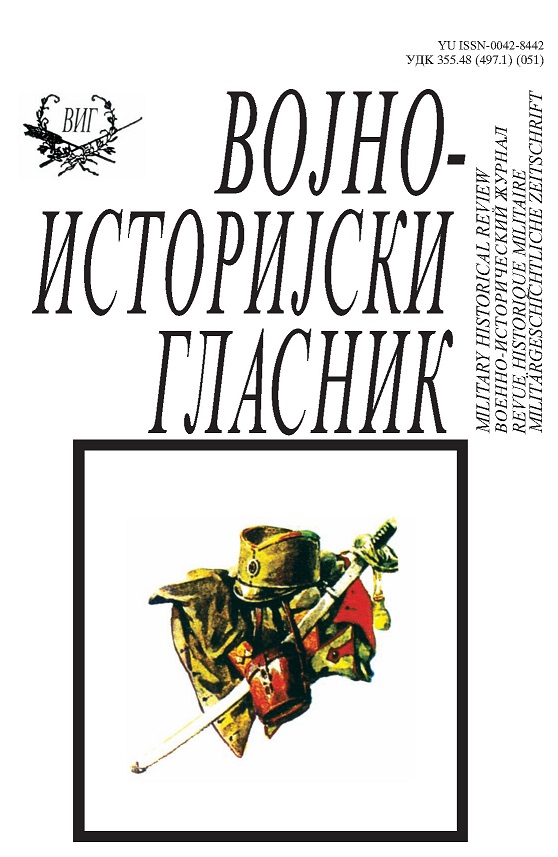Аутомобилска служба у Српској војсци 1914/1915.
Car Service in the Serbian Army 1914/1915
Author(s): Dalibor DendaSubject(s): Governance, Military history, Political history, Military policy, Pre-WW I & WW I (1900 -1919), Transport / Logistics
Published by: Institut za strategijska istraživanja
Keywords: Car service; Serbian Army; 1914-1915; drivers; officers; Serbian Car Service Command; Yugoslavia;
Summary/Abstract: In the first years of the World War I the Serbian Army was supplied with motor vehicles by requisition from private owners, war prey and procurement abroad. The lessons learned from battle on the river Marna definitely resulted in procurement of greater number of cars for the army needs. One of the main reasons for introducing greater number of cars in use in the Serbian Army was fear of diseases in pack animals which in the new circumstances could not be replaced with that requisitioned from the people. The car was more economical than draft animals, since it did not consume anything when it was out of operation. The increased number of motor vehicles led to the need for developing a formation of car units and regulations of car service. Car service command as an installment which integrated car detachments and accompanying units was formed at the beginning of March 1915 in Kragujevac, so that 1915 in the Serbian as well as in the French Army was crucial for car service formation. Due to lack of national trained drivers, a detachment of approximately hundred French car drivers was sent to the Serbian Army as a support. Characteristic for this period was irresponsible attitude of the drivers and officers towards the cars, so that drivers in the Serbian Army gained bad reputation. The cars used by the Army had also a significant role during its retreat towards Albania and the South, but almost all of them were crippled and left at the foot of the Albanian mountains or destroyed in attempt to reach Thessalonica in them in December 1915. Only a smaller number of vehicles reached Greece and served as a base for redevelopment of the car units. In this period the car was fully accepted in the Serbian Army, аnd the trained personnel given by Serbian Car Service Command will play an important role in motorisation development in the Kingdom of SCS/Yugoslavia, so that the Army can be seen as a key player in modernisation in this area.
Journal: Vojnoistorijski glasnik
- Issue Year: 2006
- Issue No: 1-2
- Page Range: 67-77
- Page Count: 11
- Language: Serbian

